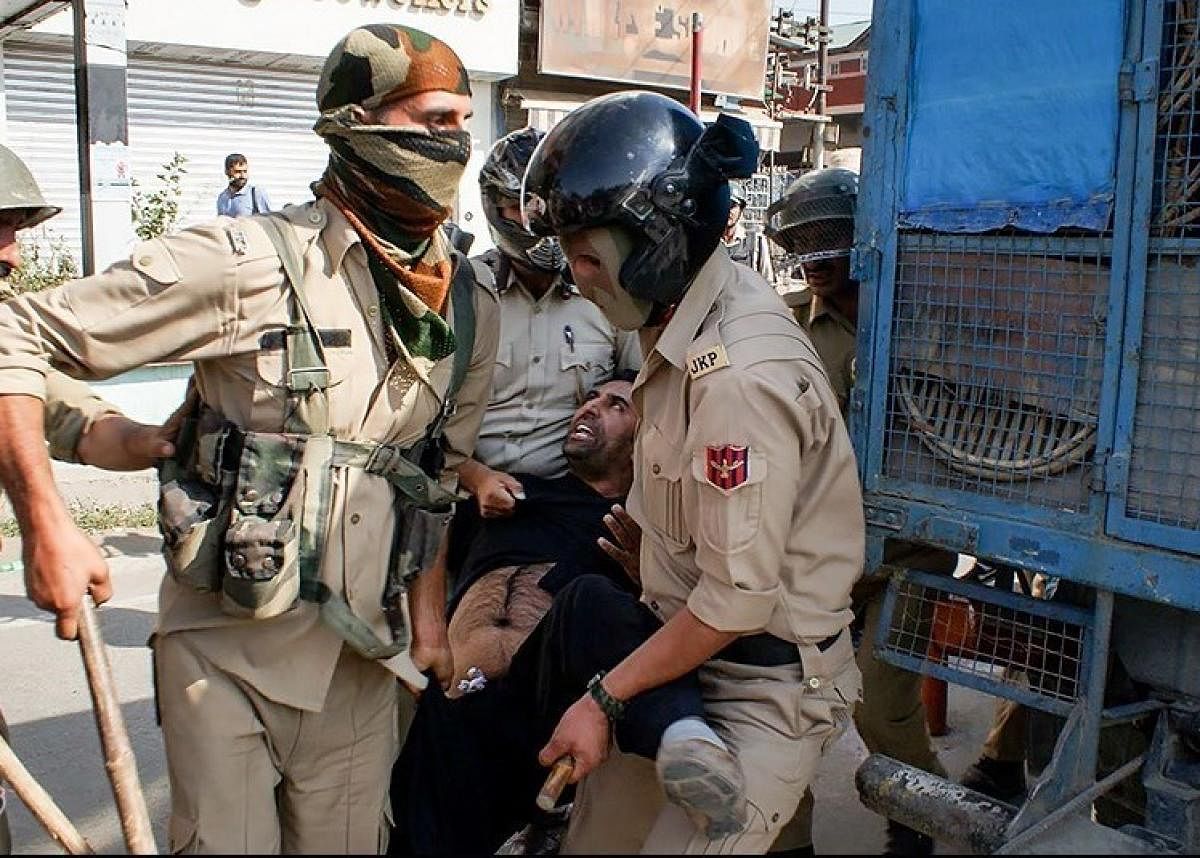The recent ‘encounter’ killings of the four accused in the rape and murder of a 27-year-old woman in Hyderabad has sparked a debate on the police’s method of ‘instant justice’. Many, including MP Jaya Bachchan had called for such methods, and the police were lauded for what they had done. However, this fuels a dangerous trend among police forces and the security forces operating in troubled areas. For years, the country has scarred by extra-judicial killings under State protection.
The closest thing we have to a Universal Human Right is the right to life. The right to life is acquired by being born, not bestowed by the State. Consequently, the power to arbitrarily deprive someone of his or her life should not lie with the State or its agents. The keyword here is “arbitrarily” – the deprivation of somebody’s life without due process of law. This qualifier also clarifies that killing in justifiable self-defence is different from the use of excessive force that leads to extra-judicial deaths.
Our bloody history
India’s affair with extra-judicial killings is nothing new. In common parlance, these deaths are referred to as ‘encounter killings’. The Independent People’s Tribunal writes that custodial and extra-judicial killings in areas affected by Naxalism have been a common practice since the 1960s. The report also tellingly includes an interview with a woman from Madhya Pradesh who narrates her husband’s encounter killing, after he tried to protect her from molestation by a police officer.
Similarly, in Andhra Pradesh, the Madras Suppression of Disturbances Act, adopted in 1961, practically encourages State forces to decide to kill in areas affected by internal insurgency or militancy. Such forces usually justify their actions by claiming that insurgents do not consider themselves bound by the law, so why should the State operate within a system that constrains them from exacting revenge.
This logic was used by the Mumbai Police, too, to eliminate gangsters in the city. Close to 1,200 alleged gangsters were killed thus. Initially, the targets may have been restricted to gangsters, but the glorified ‘encounter specialists’ soon started to target lesser criminals. The Committee for Protection of Democratic Rights expresses suspicion over how the policemen almost always shot to kill (aimed at the head or chest), instead of shooting to disarm or injure.
The most glaring example of misuse of police power is perhaps the Punjab Police’s tryst with extra-judicial killings. The Punjab Documentation and Advocacy Project (PDAP) uncovered some 8,000 cases of killings during the period that it was experiencing militancy. While unearthing the identities of people buried in mass graves, the PDAP found that 5,648 bodies were of unclaimed or unidentified persons and had been disposed of illegally. Eyewitnesses from the police forces corroborated the senseless misuse of power and how that resulted in the killing of many innocent people.
India’s woes are not limited to the past. At the beginning of this year, many international watchdog organisations criticised India for the alarming rise in extra-judicial and custodial deaths in Uttar Pradesh under the Yogi Adityanath government. In the months after he came to power in 2017, 1,038 encounters were conducted, killing 59 and injuring 238. What was even more alarming was Chief Minister Adityanath’s blatant endorsement of the encounters.
If Punjab, UP, Mumbai, Gujarat police forces could do it, would Hyderabad police be left behind? The Hyderabad police claimed that the suspects tried to attack them and were killed in the exchange. Citizens, who were still to recover from the shock of the brutality of the rape and murder of the 27-year-old, rejoiced. However, can they be sure that the four that the police had arrested were actually the perpetrators of the crime? What if it were somebody else who are still at large? Now, we will never know. That’s not justice for the victim, either.
Impunity
Extra-judicial killings are fuelled by the distressing fact that the police and security forces enjoy impunity. Sections 132 and 197 of the CrPC state that the consent of the central or state government is required to begin prosecution of officers from the police forces. The poor, whose cases rarely receive the attention accorded to high profile cases, are disproportionately affected by these safeguards. Take, for example, a case from Chhattisgarh. In 2011, the Supreme Court gave a landmark judgment declaring it unconstitutional to employ barely literate youth in the “purification hunt” called Salwa Judum to fight Maoist forces. This had resulted in the unsanctioned killing of many in the area. In 2018, two women from the area have revived the matter, alleging that the police accounts of the deaths of villagers in their neighbourhood were false.
States in India seldom hold the police responsible for their actions, and seldom provide the resources to sensitize and train police officers. If the police enjoy legal impunity on the one hand, they are also most often free of public scrutiny following encounters. Extra-judicial action is often most common in ‘disturbed’ areas. The police is often cast in the role of the ‘hero,’ who has pure intentions. Movies celebrating ‘encounter specialists’ contribute to this narrative.
Today, the police may have targeted rape suspects, tomorrow they may shoot a petty thief. Where do we draw the line, if we are even inclined to draw one?
If current practices persist, the State is clearly communicating its belief that it does not value the lives of citizens in disturbed areas and of those that lose their lives in police encounters. That would be a serious breach of India’s moral commitment to the Constitution and its obligations under international human rights law.
The way forward is to delegitimize the impunity given to the police and security forces against illegal actions, expedite court procedures and to empower citizens to speak up when State agents violate their rights.
